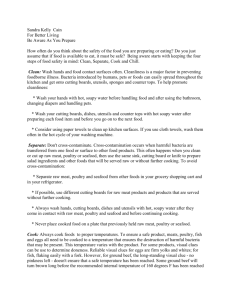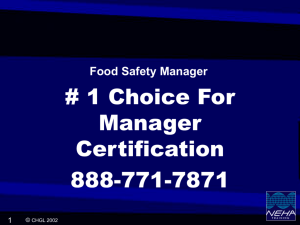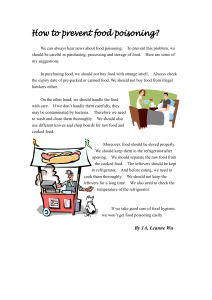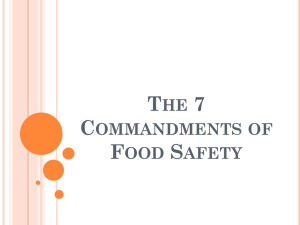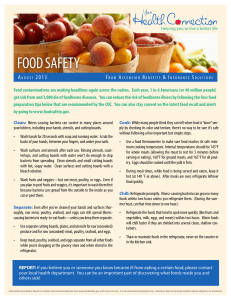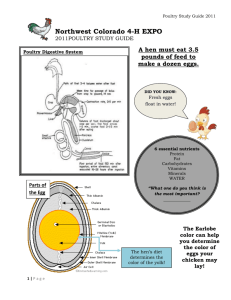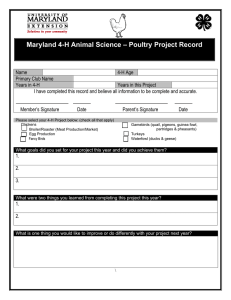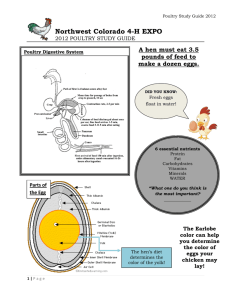Notes from Nurse Maggie: Holiday Food Safety Tips—food is such a
advertisement
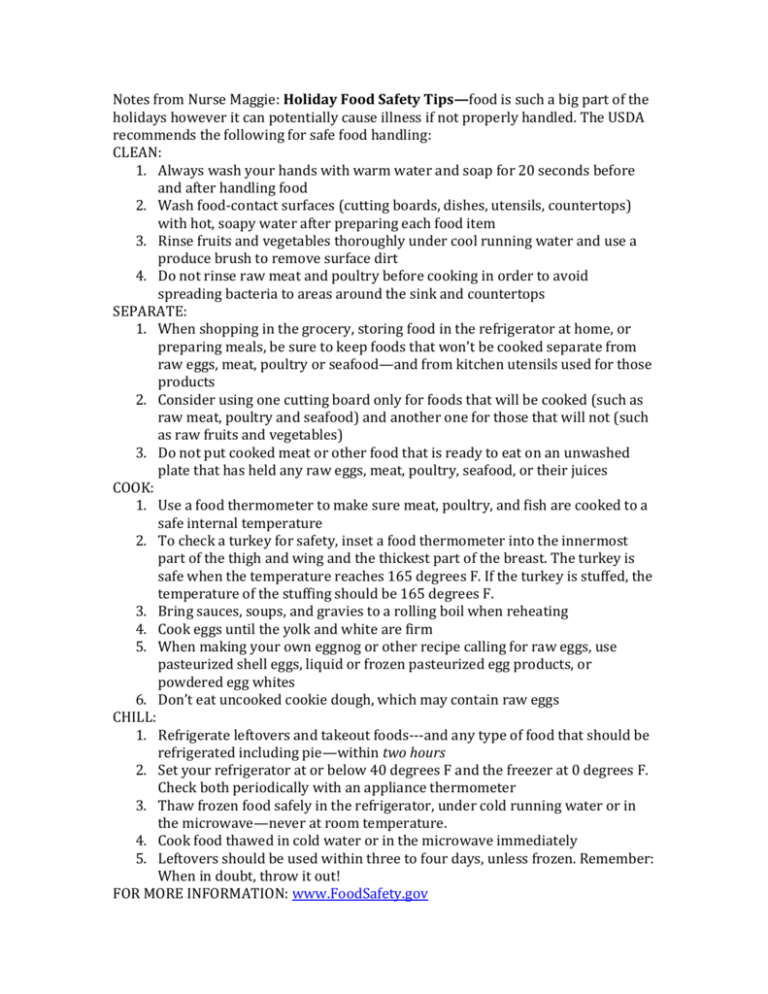
Notes from Nurse Maggie: Holiday Food Safety Tips—food is such a big part of the holidays however it can potentially cause illness if not properly handled. The USDA recommends the following for safe food handling: CLEAN: 1. Always wash your hands with warm water and soap for 20 seconds before and after handling food 2. Wash food-contact surfaces (cutting boards, dishes, utensils, countertops) with hot, soapy water after preparing each food item 3. Rinse fruits and vegetables thoroughly under cool running water and use a produce brush to remove surface dirt 4. Do not rinse raw meat and poultry before cooking in order to avoid spreading bacteria to areas around the sink and countertops SEPARATE: 1. When shopping in the grocery, storing food in the refrigerator at home, or preparing meals, be sure to keep foods that won’t be cooked separate from raw eggs, meat, poultry or seafood—and from kitchen utensils used for those products 2. Consider using one cutting board only for foods that will be cooked (such as raw meat, poultry and seafood) and another one for those that will not (such as raw fruits and vegetables) 3. Do not put cooked meat or other food that is ready to eat on an unwashed plate that has held any raw eggs, meat, poultry, seafood, or their juices COOK: 1. Use a food thermometer to make sure meat, poultry, and fish are cooked to a safe internal temperature 2. To check a turkey for safety, inset a food thermometer into the innermost part of the thigh and wing and the thickest part of the breast. The turkey is safe when the temperature reaches 165 degrees F. If the turkey is stuffed, the temperature of the stuffing should be 165 degrees F. 3. Bring sauces, soups, and gravies to a rolling boil when reheating 4. Cook eggs until the yolk and white are firm 5. When making your own eggnog or other recipe calling for raw eggs, use pasteurized shell eggs, liquid or frozen pasteurized egg products, or powdered egg whites 6. Don’t eat uncooked cookie dough, which may contain raw eggs CHILL: 1. Refrigerate leftovers and takeout foods---and any type of food that should be refrigerated including pie—within two hours 2. Set your refrigerator at or below 40 degrees F and the freezer at 0 degrees F. Check both periodically with an appliance thermometer 3. Thaw frozen food safely in the refrigerator, under cold running water or in the microwave—never at room temperature. 4. Cook food thawed in cold water or in the microwave immediately 5. Leftovers should be used within three to four days, unless frozen. Remember: When in doubt, throw it out! FOR MORE INFORMATION: www.FoodSafety.gov

